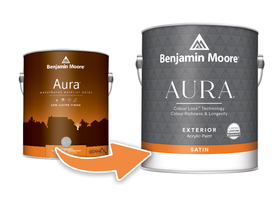
How to Choose the Right Paint Roller
As with brushes, there are a lot of different paint rollers out there. Picking the right roller for your job will not only make the work a lot easier, but will provide a better and more professional looking finish. Rollers come in many different sizes. Small “weenie rollers” or “slim jims” are good for those tight spaces where another roller won’t fit but you shouldn’t try to paint a whole wall with them. Larger 14 and 18-inch rollers work well when you have a lot of area to cover. Mostly though, a 9-inch roller is what will be used for the brunt of the painting work.
Choosing the Proper Cover & Nap
Roller covers can be natural or synthetic, like brush bristles. As with brush bristles, you want to use synthetic covers for latex paints, while natural covers work well for oil-based paints. The reason is that natural naps will soak up acrylic, and won’t spread it as well onto the surface.
Another feature of the cover is the “nap” or the thickness of the covering. The nap length that you should use is dependent on the surface that you are painting. Longer naps let you paint over rough surfaces more evenly and smoothly, allowing you to get into the all the “craters and valleys” of the surface.
Better covers are moisture-resistant and solvent-resistant. This means that they will have better coverage and last a lot longer. Cheaper covers can fall apart or leave lint on the surface that you are painting resulting in a rough and unsightly finish, this is why it’s best to simply avoid these throw away rollers.
Shorter naps are better for smooth walls. Try a 1/4-inch nap if you are painting fine, smooth surfaces, like a new wall or a door. 3/8-1/2-inch naps are good for walls with a bit of texture, like plaster or concrete. For the really rough surfaces, a 3/4-inch nap is recommended.
In addition to nap length, the nap density, or “pile” can also have an effect on your work. High-density naps can hold more paint, and reduce splatter. The best type of covering when talking in terms of high density, long length is usually lamb wool or sheepskin. For smooth walls, go with micro fiber naps.
Another choice you will have to make is the internal material of the roller cover. You’ll find rollers with cardboard and some with plastic. The cardboard rollers are not recommended, as they cannot be cleaned. Plastic is the preferred material; they are reusable and can be easily cleaned.
Try to avoid foam covers unless you know what you are getting into. They don’t work well with most surfaces, causing lots of air bubbles to foam under the paint. These will leave your finish looking bad and reduce the life of your paint job. There are however some new foam rollers specifically made for gloss type finishes which, in the right hands, produce flawless finishes.
Caring For Your Tools
If you get a good cover or cage, make sure to save it. Wash it out as soon as you are done painting with it. In fact, you should rinse it out a few times during painting to make sure that no paint is drying onto the roller. Spend the extra amount to get good equipment, and you won’t have to make constant trips back to the store when your cheap roller falls apart or stops absorbing.
You should also purchase an extension for the roller, to get those high up spots. This will reduce time in moving ladders around, as well as climbing up and down ladders to get more paint. There are a variety of extension poles available from telescoping poles to simple wooden poles.
For more information on paint rollers and other painting tools & equipment, and to find the best roller for your project, feel free to contact us.



